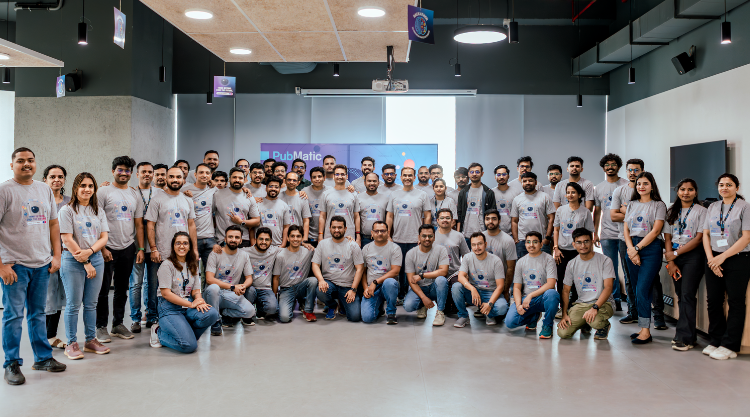What does the new world of publishing look like? In this increasingly digital era, the definition of what makes a publisher is constantly changing. Why? Because technology accelerates everything – including the media business. Publishers and advertisers are now operating in a real-time world where the number of devices, content and ad impressions keep increasing daily. Yet even as content stretches towards the infinite, consumer attention remains finite.
In September, we hosted the first exclusive PubMatic influencer dinner which brought together leading names from across the publishing and media industries. The group were tasked with discussing the hot topics of the day – the overarching theme being how do the industry leaders look forward, rather than backwards, when developing strategies for engaging the digital consumer.
Chaired by a leading BBC News presenter who brought their own views on the future of media and the role of advertising within it, the dinner was attended by Guy Phillipson, CEO of IAB UK, leading futurist Tracey Follows, Matt Teeman, Commercial Director EMEA at Bloomberg Media and Lee Williams, Director of Digital Revenues at Haymarket. They were joined by Luca Parderni from Forrester and media representatives including Christoph Scheuerman, UK correspondent at German broadsheet Der Spiegel and Jonathan Shannon, editor of Brand Republic. Also PubMatic’s President, Kirk McDonald and Bill Swanson, VP EMEA, attended.
“Anyone can be a publisher… but few find it easy to be a successful one”
With a number of media experts and publishers in the room, conversation naturally focused a lot on how the ‘face’ of the publisher has changed, how it will continue to shift in the coming years and how to remain ahead of the competition. In a digital world, the fact that anyone – brand, outlet, blogger, and consumer – can be a publisher sparked debate. Whoever the publisher is, they face growing challenges in delivering the experience audiences expect. Some of these are being overcome, for example the room acknowledged the use of data analysis to understand audiences and map effective content strategies is already commonplace and that this real-time data is the key to helping publishers make timely and informed decisions.
“The success of the publishing industry depends on the success of advertising”
With the majority of consumers now accessing the internet via their mobile devices, probably the most personal of screens, their expectations around the online experience has changed. Relevant, engaging, personalised and real-time content, and that includes advertising, that enhances not distracts from the overall experience is top of their wish list. This has meant that the relationship between editorial and sales has had to evolve. As one attendee put it “The ad sales teams and the publishing teams once sat on different floors and rarely spoke until the ad space needed to be sold. Now, they all need to think like a publisher as the success of the publishing industry depends on the success of advertising.”
It was widely agreed that the publishing industry in its entirety needs to return to focusing on the consumers and what they want. But with the average consumer exposed to over 3,500 brand messages daily the requirement of publishers to maintain the relationship between their content, the consumer and the advertiser is more challenging than ever.
“Publishing driven by technology is the future”
Real-time data analysis and programmatic trading, all underpinned by technology platforms, are the new normal of publishing. Digital born natives like Buzzfeed intrinsically understand the opportunity and have leveraged this to their advantage.
In an increasingly ‘consumer-driven’ market, user behaviours are evolving and advancing the world of digital publishing. If traditional publishers are going to be successful in this new world of publishing they need to get ahead of real-time, quickly.





